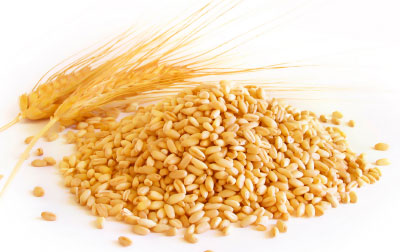Eastern dryness mars strong Australia crop outlook

Dryness in eastern Australia is marring otherwise favourable prospects for US growers, and posing an “increasing risk” to a recovery in cattle prices, RuralCo said, as the farm services group unveiled a return to the black.
The grain trading-to-farm retail company said that for western and southern areas of Australia, where farmers are undertaking autumn plantings, “winter crop programmes are well advanced”, thanks to the “benefit” of autumn rains.
For RuralCo, this progress was generating a “positive response in sales of crop protection and fertiliser products” to farmers in these areas.
‘Increasing risk to prices’
However, in the east of the country, northern parts of New South Wales and “much of” Queensland have seen “little follow-up to the March rainfall activity”, RuralCo chairman Richard England said.
“Dry conditions [are] again prevailing.”
Besides a threat to arable production, the return of dryness poses a threat to a revival in cattle prices from 278.50 Australian dollar cents a kilogramme in January, the lowest since 2009, as measured by the eastern young cattle indicator.
The recovery, to 360.75 Australian dollar cents a kilogramme in late April, has been fuelled by the boost to pasture conditions from rains, discouraging producers from further cutting back on herds, although prices have already retreated somewhat over the last month, standing at 328.50 Australian dollar cents a kilogramme on Monday.
The dry conditions are “an increasing risk to cattle prices if livestock oversupply conditions persist”, Mr England said.
“Markets are vulnerable to a downward correction given the continuing dry conditions in much of Queensland and northern New South Wales.”s
‘Influx of drought-affected cattle’
The comments came as data showed the number of cattle on Australian feedlots, as of March, hitting its highest since late 2006, growth viewed as down to the enthusiasm of drought-hit ranchers to sell their livestock to fattening enterprises.
The number of cattle on feedlots rose by 63,000 head, or 8%, to 873,800 head during the first three months of the year, data from the Australian Lot Feeders Association (Alfa)and Meat & Livestock Australia showed.
The increase was driven by “an influx of cheaper drought-affected cattle” to feedlots, “as well as heightened demand for Australian beef overseas”, Alfa president Don Mackay said.
However, the dry conditions “also led to grain and fodder price increases which largely offset feeder margins,” he added.
‘Increasingly concerned’
Indeed, Pentag Nidera highlighted a premium of some Aus$35-40 a tonne in prices of general quality Australian premium white (APW) wheat in east coast ports compared with those in South Australia, or Western Australia.
“Clearly the market is becoming increasingly concerned that new crop production prospects are slipping away, as soil profiles in the north start to dry out after the late-March rain, and forecasts continue to call for a warm, dry winter,” the Queensland-based broker said.
“Despite solid forward prices, farmers in northern New South Wales and Queensland have been slow to engage the market amid the increasing production uncertainty.”
‘Trend toward El Niño’
US weather service MDA has also highlighted the dryness in the east, saying that “dryness will build further in southern Queensland and northern New South Wales”, with some rains expected this week “too light to significantly improve moisture”.
Longer-term the prospect of an El Nino, adds an extra production risk, with the weather pattern linked to dryness in eastern Australia.
The Australian Bureau of Meteorology on Tuesday restated a forecast of a chance of at least 70% of an El Nino developing this year, likely within the next three months.
“The tropical Pacific Ocean continues a general trend toward El Niño, with just over half of the climate models surveyed by the bureau suggesting El Niño thresholds will be exceeded by August,” the bureau said.
‘Patchy market’
RuralCo’s comments came as the group unveiled earnings of Aus$5.1m for the October-to-March half, compared with a loss of Aus$500,000 a year before, on revenues up 13.7% at Aus$544.6m.
The dryness helped operating profits in livestock soar 31% to Aus$25.6m, in encouraging higher volumes through the group’s auction operations. RuralCo handed 41% more cattle and 12% more sheep than a year before.
Profits from the property arm rose 13% to Aus$13.5m, helped by firm residential markets, but with demand for rural property “patchy… as well as being biased to properties in south areas or with secure irrigation”, the group said.
RuralCo shares closed up 0.8% at Aus$3.68 in Sydney.
Source: agrimoney





























